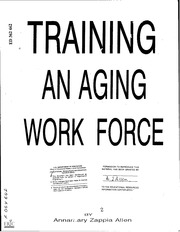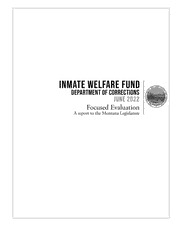
Inmate welfare fund focused evaluation : Department of Corrections PDF
Preview Inmate welfare fund focused evaluation : Department of Corrections
Performance Audits Legislative Audit Performance audits conducted by the Legislative Audit Division Committee are designed to assess state government operations. From the audit work, a determination is made as to whether agencies and programs Representatives are accomplishing their purposes, and whether they can do so with Kim Abbott greater efficiency and economy. Kim.Abbott@mtleg.gov Denise Hayman, Chair We conducted this performance audit in accordance with generally Denise.Hayman@mtleg.gov accepted government auditing standards. Those standards Emma Kerr-Carpenter require that we plan and perform the audit to obtain sufficient, Emma.KC@mtleg.gov appropriate evidence to provide a reasonable basis for our findings Terry Moore and conclusions based on our audit objectives. We believe that terry.moore@mtleg.gov the evidence obtained provides a reasonable basis for our findings Matt Regier and conclusions based on our audit objectives. Members of the Matt.Regier@mtleg.gov performance audit staff hold degrees in disciplines appropriate to the Jerry Schillinger audit process. jerry.schillinger@mtleg.gov Performance audits are conducted at the request of the Legislative Senators Audit Committee, which is a bicameral and bipartisan standing Jason Ellsworth, Vice Chair committee of the Montana Legislature. The committee consists Jason.Ellsworth@mtleg.gov of six members of the Senate and six members of the House of John Esp Representatives. Johnesp2001@yahoo.com Pat Flowers This report is distributed as required under §5-13-304 (3), Pat.Flowers@mtleg.gov MCA, to members of the Legislative Audit Committee and Tom Jacobson other interested parties. This report contains a written response Tom.Jacobson@mtleg.gov from the Department of Corrections and we wish to express Tom McGillvray our appreciation to department staff for their cooperation and Tom.McGillvray@mtleg.gov assistance during our audit. Mary McNally McNally4MTLeg@gmail.com Respectfully submitted, Members serve until a member’s Angus Maciver, Legislative Auditor legislative term of office ends or until a successor is appointed, whichever occurs first. §5-13-202(2), MCA Audit Staff Amber Robbins William Soller Fraud Hotline (Statewide) 1-800-222-4446 (in Helena) 444-4446 ladhotline@mt.gov Reports can be found in electronic format at: www.montanafraud.gov https://leg.mt.gov/lad/audit-reports #22P-03 June 2022 M L a d ontana egisLative udit ivision Focused Evaluation A report to the Montana Legislature Angus Maciver, Legislative Auditor INMATE WELFARE FUND Background The Department of The Department of Corrections generally administered Corrections (DOC) manages the Inmate Welfare Fund (IWF) according to state a fund authorized in statute law and department policy. However, we identified called the Inmate Welfare some questionable IWF expenses and inconsistencies Fund (IWF). Revenue in administrative processes that suggested policy to the IWF is mostly clarifications and revisions are necessary. inmate-generated, almost entirely from telephone use What we did by inmates and the sale of canteen items to inmates. The objective of our audit was to determine whether the All secure facilities housing department administers the IWF according to state law and state inmates, both those department policy. For this performance audit, we reviewed managed by the department samples of IWF revenue and expenditure line items from the and contracted, participate in state’s accounting system between fiscal years 2019 and 2021. the IWF. We interviewed department and contractor staff at each facility to learn about administration of the IWF. We also interviewed inmate The IWF is comprised of representatives at two facilities to learn about how inmates two parts, a Facility Fund provide input on spending of the IWF and their satisfaction with the process. Additionally, we talked to four other states that portion and a Global Fund administer an IWF-equivalent. portion. For the Facility Fund portion, each facility What we found participating in the IWF develops an annual IWF Most IWF expenses we reviewed were appropriate. However, we budget with input from identified some inappropriate and questionable IWF expenses residents at the facility. The and inconsistencies in administrative practices across facilities. remaining portion of the Most inappropriate IWF expenses we identified occurred due IWF available after facility to clerical errors. Some questionable IWF expenses occurred budgets are determined is due to varying interpretations of IWF policy across facilities or termed the Global Fund. over time. We also identified some IWF purchases that raised The Global Fund is used for reasonable questions about whether the state or the facility individual release assistance should have funded them instead of the IWF. For example, the and for implementing department used the IWF to pay for items provided to indigent projects that benefit inmates. inmates that, while permitted in policy, should be considered part of the state’s responsibility. The department also used the IWF to pay for computers and printers at the prisons to be Room 160 • State Capitol Building • PO Box 201705 • Helena, MT • 59620-1705 • Phone: 406-444-3122 used by inmates to do legal Most IWF revenue came from phone contract commissions research. This IWF expense and canteen sales. could be considered part of FY2021 IWF Revenue by Facility providing adequate access to the courts, which is the $400 K department’s responsibility. Another questionable IWF expense was for the $300 K Phone annual licensing cost for a GED study program. This was questionable since it could be considered $200 K part of the facility’s Other contractual responsibility. Additionally, we found some $100 K administrative requirements Canteen in department policy were not consistently followed $ K or did not reflect current Pine Hills Cascade Dawson Montana Crossroads Montana practice across facilities. County County Women's State Prison Prison IWF revenue items were supported by sufficient documentation We reviewed 50 of 386 Facility IWF revenue line items from fiscal years 2019 through 2021 from the state’s accounting system. This sample included approximately $349,000 in IWF revenue. We judgmentally selected the sample to include revenue from each facility and from different sources, such as telecommunications contract commissions, canteen sales, and other sales of items to inmates. We found IWF revenue sources aligned with what is required in state law and department policy. We also found all sampled revenue line items were sufficiently supported by documentation maintained by the department. The IWF is for the needs of inmates and their families State law says the IWF may be used for the needs of inmates and their families. Department policy on administration of the IWF echoes this language. The policy further states the IWF should not be used to provide services, supplies, or equipment that the department or the facility is obligated to provide for the health, welfare, security of inmates, or the general operation of a prison. The policy applies to all secure facilities, both department-owned and contracted. It is the department’s responsibility to ensure policy is written in a clear manner that reflects current requirements and expectations. Policy should also be written to encourage consistent understanding and compliance across facilities. Adequate training on and understanding of the policy is important for achieving consistent application across different facilities. Most IWF purchases were appropriate IWF expenses We reviewed 100 Facility Fund and 41 Global Fund expenditures from fiscal years 2019 through 2021 from the state’s accounting system. This sample included approximately $435,000 in expenditures from the IWF. Most of these were judgmentally sampled to target potentially high-risk expenditures and to obtain a broad range of expenditure types from this time frame. High-risk expenditures were those with records in the state’s accounting system that were unclear on the detailed nature of and purpose of the purchase. The samples were selected from the population of 2,607 Facility Fund and 959 Global Fund expenditure line items. Overall, most 2 of the sample items we reviewed were appropriate IWF expenses. For example, many of the expenses in our sample were for the following items or types of items: • Entertainment, such as television, movie, newspaper and magazine subscriptions, and video games. • Recreational equipment and repair and maintenance on recreational equipment or recreational spaces. • Appliances or repair and maintenance on appliances used by inmates. • Hobby supplies. • Holiday and other handouts to residents. • Family events. • Inmate wages for limited types of inmate jobs. Note: Wages for other types of inmate jobs are paid by General Fund or Enterprise Fund, not IWF. • Staff pay when staff supervise inmates on escorted leave, such as for a funeral or sick bed visit, or when staff supervise tournaments. Weightlifting equipment at Montana State Prison purchased from the Inmate Welfare Fund. • Assistance for individual inmates upon release for housing or transportation. We considered these items to be appropriate IWF expenses that were for the benefit of inmates and their families and not part of the state’s responsibility. Some IWF expenditures were inappropriate or questionable While most IWF purchases we reviewed were appropriate, we determined some IWF purchases in our sample were inappropriate or questionable. We found inappropriate IWF expenses that occurred due to clerical errors or staff turnover. These expenses should not have been funded by the IWF because they were part of the state’s responsibility or did not directly benefit inmates. These included: • A chaplain membership renewal fee ($75) • One washing machine and three dryers ($1,992) • Hotel room for staff transporting an offender ($107) • A plane ticket for an extradition from California ($823) We also identified questionable IWF purchases due to varying policy interpretations over time or across facilities. For example, one purchase was for an ice and water dispenser for the infirmary that cost around $5,200. The department indicated that an ice and water dispenser for the infirmary is no longer considered an appropriate IWF expense. Another purchase was for a professional license renewal fee for an individual inmate ($400). While we do not question that a professional license renewal for an individual inmate would benefit the inmate, this did not meet department policy on the use of Facility IWF funds since it benefited only one inmate. Facility IWF funds are intended to be used for the collective benefit of the inmates. We also learned that a professional license renewal fee would not be an approved IWF expense at all facilities due to varying interpretations of policy. 3 Additionally, we identified some expenditures that were questionable in terms of whether they should have been considered part of the state’s or facility’s responsibility. These included: items provided to indigent inmates, equipment used for inmates to do legal research, and annual license renewal for a GED study program. Questionable expense: Items provided to indigent inmates The department regularly paid for items for inmates on indigent status at all facilities from the IWF, which is specifically allowed in department policy. Indigent status refers to the status applied to an offender who has insufficient funds to purchase hygiene or legal supplies from the facility canteen. We believe items provided to indigent inmates, items like basic hygiene supplies and supplies for legal communication, fall under the state’s responsibility and were not appropriate IWF expenses. The cost for indigent items in the sample we reviewed was $9,450. The department estimated the annual expense for indigent kits across all facilities is approximately $28,000. Questionable expense: Equipment used for inmates to do legal research Another questionable IWF expense was the purchase of 13 computers and printers for inmates to access department policy and do legal research. This was an approximately $12,000 purchase in fiscal year 2019. We found using IWF to pay for the equipment inmates use to do legal research was questionable since it is well-established that adequate access to the courts for inmates is a state responsibility. The state currently covers most of the ongoing subscription costs for access to electronic legal reference materials on the equipment. However, the IWF pays for a portion of the monthly subscription costs for access to legal reference materials that are in addition to those the state is legally required to provide. We did not find using IWF to pay for access to additional legal materials to be questionable, but we found the purchase of the equipment inmates use for legal research from the IWF to be questionable. Questionable expense: Annual license renewal for GED study program The other questionable expenses we identified in our sample were two instances of a $1,350 annual licensing fee for a GED study program. Both were IWF expenses at Crossroads Correctional Center, which is a contracted facility. These should have been facility expenses as the GED program could be considered a contractual requirement, and GED program items are not paid out of the IWF in other facilities. Some administrative requirements were not followed or did not reflect current practice We found not all facilities followed some of the administrative requirements in policy regarding the processing of requests for IWF funds, and some requirements did not reflect current practice. For example, we found discrepancies across facilities in the use of the required form for making IWF requests. While required in policy, the department does not require the form in practice for ongoing, fixed expenses, such as for correctional television services. Fixed expenses varied somewhat across facilities. Additionally, some facilities did not use the form to process IWF requests and instead used other forms. Another administrative requirement that all facilities 4 did not consistently follow was the requirement to meet monthly with inmate representatives. One facility did not meet monthly with inmate representatives as required in policy due to the short stay of residents at this facility. We also identified some areas of Global Fund policy that did not reflect current practice, such as requiring Global Fund requests to be submitted 45 days before the inmate’s release date. These requests are submitted and processed much closer to the inmate’s release date. Global Fund policy was also unclear on when an inmate was eligible for transportation assistance upon release from this funding source. Inappropriate IWF purchases leave less money available for the benefit of inmates Items purchased from the IWF include many items for recreation or entertainment, like television services and recreational equipment. These items and activities make the prison safer for both officers and inmates. They can also help inmates stay connected to the wider community, which increases their chances of successful reentry into the community once released. When items are purchased inappropriately using the IWF rather than other funding sources, less money is available in the IWF for purchasing items that benefit the inmates. When IWF policy is not implemented consistently across facilities, inmates at different facilities do not consistently benefit from the use of the IWF. This leads to equity issues across the state’s secure facilities. Equity issues can contribute to, among other outcomes, variability in rehabilitative success. This can also lead to higher costs to the state and to local communities through increases to recidivism. One other state has clearer IWF policy We talked to four other Other states administer an Inmate Welfare Fund differently. states administering an IWF-equivalent as part of the audit. The table shows how Montana compared with other states on the specificity of allowable expenses in IWF policy and other aspects of IWF administration. One state, Washington, had much more detail in policy on what items or activities qualified as appropriate IWF expenses. The primary consideration used by Washington for determining appropriate IWF expenses was whether the state would purchase the item(s) were the IWF nonexistent. While Montana’s IWF policy had moderate detail on what items or activities are allowable, revisions and additional detail are needed. Montana obtains formal input from inmates and has an oversight group that approves high-dollar IWF expenses, and some states do not. Input from inmates and an oversight group are important components of IWF administration. However, both Washington and North Dakota pay for items for indigent inmates from General Fund and not IWF, viewing these items as the state’s responsibility. We believe indigent items, especially basic hygiene items and supplies for legal communication, fall under the state’s responsibility and that Montana should not pay for indigent items from the IWF. Washington and 5 Wyoming attempt to recoup the cost of some indigent items from inmates as inmates obtain funds. Montana could consider doing this as well. IWF policy is vague and does not reflect current practice Department policy on the IWF is vague. Facility administrators gave varying interpretations of department policy in terms of what was an appropriate IWF expense. Some indicated the number of inmates affected was the primary litmus test for IWF spending, while others indicated it was more about the purpose of the item being purchased. This has resulted in some questionable IWF purchases and inconsistencies in the application of policy across facilities. Policy enumerates some items and activities that are considered appropriate IWF purchases. However, it is not detailed enough to ensure consistent interpretation and application across facilities. Policy also lists indigent items as allowable IWF expenses, which we believe is an appropriate expenditure for the department. Some of the inappropriate IWF expenses we identified during file review were due to clerical errors or new staff not yet adequately trained on IWF policy. This suggested the need for the department to ensure all facilities are adequately trained on and understand department policy. As discussed, some of the administrative requirements in department policy did not reflect current practice. The department should ensure policy reflects current practice and that policy is consistently followed across facilities. Recommendation We recommend the Department of Corrections revise and implement department policy related to the Inmate Welfare Fund to: A. Add clarity on what items and activities qualify as appropriate expenses. B. Remove items for indigent inmates from allowable IWF expenses. C. Reflect current practice and expectations regarding the processing of requests for funds. 6
The list of books you might like

Shatter Me Complete Collection (Shatter Me; Destroy Me; Unravel Me; Fracture Me; Ignite Me)

Better Than the Movies

The Silent Patient

Believe Me
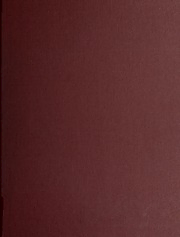
Statutes of the Province of Ontario 2006 pt. 3
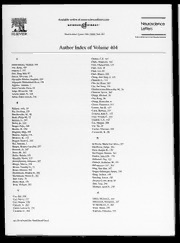
Neuroscience Letters 2006: Vol 404 Index

Chroniques des vampires - Tome 2 - Lestat le Vampire
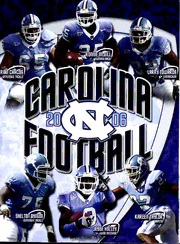
Carolina football
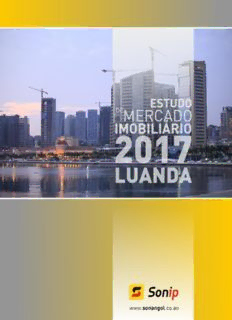
Estudo do mercado imobiliário em Angola

A Defense of the Nicene Definition (De Decretis)

Attitudes, Personality and Behavior (2nd Edition)
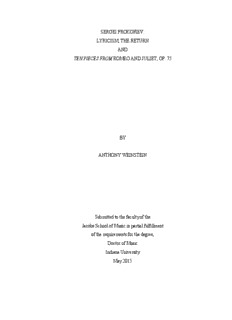
BY ANTHONY WEINSTEIN

Greek Government Gazette: Part 2, 2006 no. 518
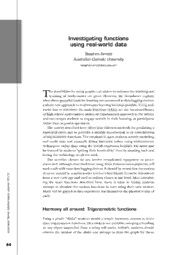
ERIC EJ744021: Investigating Functions Using Real-World Data
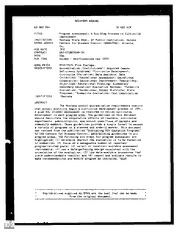
ERIC ED362564: Program Assessment: A Six-Step Process to Curriculum Improvement.
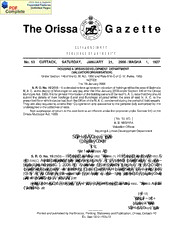
Odisha Gazette, 2006-01-07, No. 53
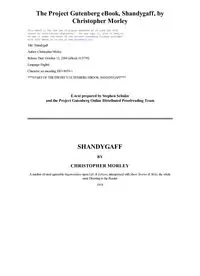
Shandygaff by Christopher Morley
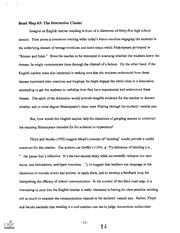
ERIC ED427347: Road Maps To Understand School Communication.

DTIC ADA454761: Automated Discovery of Mimicry Attacks
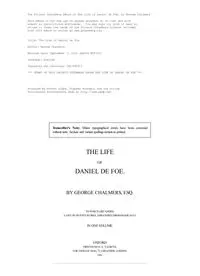
The Life of Daniel De Foe by George Chalmers
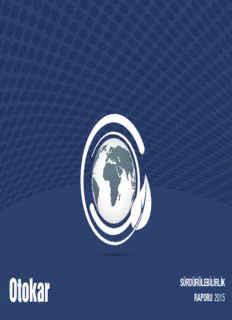
sürdürülebilirlik raporu 2015
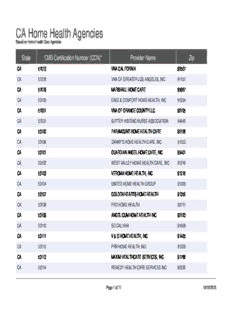
CA Home Health Agencies
